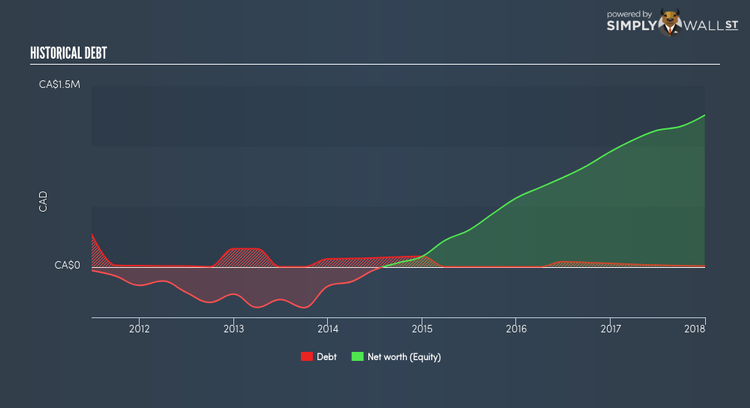How AirIQ Inc (CVE:IQ) Delivered A Better ROE Than Its Industry

AirIQ Inc (TSXV:IQ) delivered an ROE of 20.86% over the past 12 months, which is an impressive feat relative to its industry average of 7.58% during the same period. Superficially, this looks great since we know that IQ has generated big profits with little equity capital; however, ROE doesn’t tell us how much IQ has borrowed in debt. Today, we’ll take a closer look at some factors like financial leverage to see how sustainable IQ’s ROE is. View our latest analysis for AirIQ
Peeling the layers of ROE – trisecting a company’s profitability
Return on Equity (ROE) is a measure of AirIQ’s profit relative to its shareholders’ equity. An ROE of 20.86% implies CA$0.21 returned on every CA$1 invested. While a higher ROE is preferred in most cases, there are several other factors we should consider before drawing any conclusions.
Return on Equity = Net Profit ÷ Shareholders Equity
ROE is measured against cost of equity in order to determine the efficiency of AirIQ’s equity capital deployed. Its cost of equity is 11.95%. Since AirIQ’s return covers its cost in excess of 8.91%, its use of equity capital is efficient and likely to be sustainable. Simply put, AirIQ pays less for its capital than what it generates in return. ROE can be split up into three useful ratios: net profit margin, asset turnover, and financial leverage. This is called the Dupont Formula:
Dupont Formula
ROE = profit margin × asset turnover × financial leverage
ROE = (annual net profit ÷ sales) × (sales ÷ assets) × (assets ÷ shareholders’ equity)
ROE = annual net profit ÷ shareholders’ equity
The first component is profit margin, which measures how much of sales is retained after the company pays for all its expenses. Asset turnover reveals how much revenue can be generated from AirIQ’s asset base. The most interesting ratio, and reflective of sustainability of its ROE, is financial leverage. Since financial leverage can artificially inflate ROE, we need to look at how much debt AirIQ currently has. Currently AirIQ has virtually no debt, which means its returns are predominantly driven by equity capital. Therefore, the level of financial leverage has no impact on ROE, and the ratio is a representative measure of the efficiency of all its capital employed firm-wide.
Next Steps:
ROE is a simple yet informative ratio, illustrating the various components that each measure the quality of the overall stock. AirIQ exhibits a strong ROE against its peers, as well as sufficient returns to cover its cost of equity. Its high ROE is not likely to be driven by high debt. Therefore, investors may have more confidence in the sustainability of this level of returns going forward. Although ROE can be a useful metric, it is only a small part of diligent research.
For AirIQ, I’ve put together three pertinent factors you should further research:
Financial Health: Does it have a healthy balance sheet? Take a look at our free balance sheet analysis with six simple checks on key factors like leverage and risk.
Valuation: What is AirIQ worth today? Is the stock undervalued, even when its growth outlook is factored into its intrinsic value? The intrinsic value infographic in our free research report helps visualize whether AirIQ is currently mispriced by the market.
Other High-Growth Alternatives : Are there other high-growth stocks you could be holding instead of AirIQ? Explore our interactive list of stocks with large growth potential to get an idea of what else is out there you may be missing!
To help readers see pass the short term volatility of the financial market, we aim to bring you a long-term focused research analysis purely driven by fundamental data. Note that our analysis does not factor in the latest price sensitive company announcements.
The author is an independent contributor and at the time of publication had no position in the stocks mentioned.

 Yahoo Finance
Yahoo Finance 

